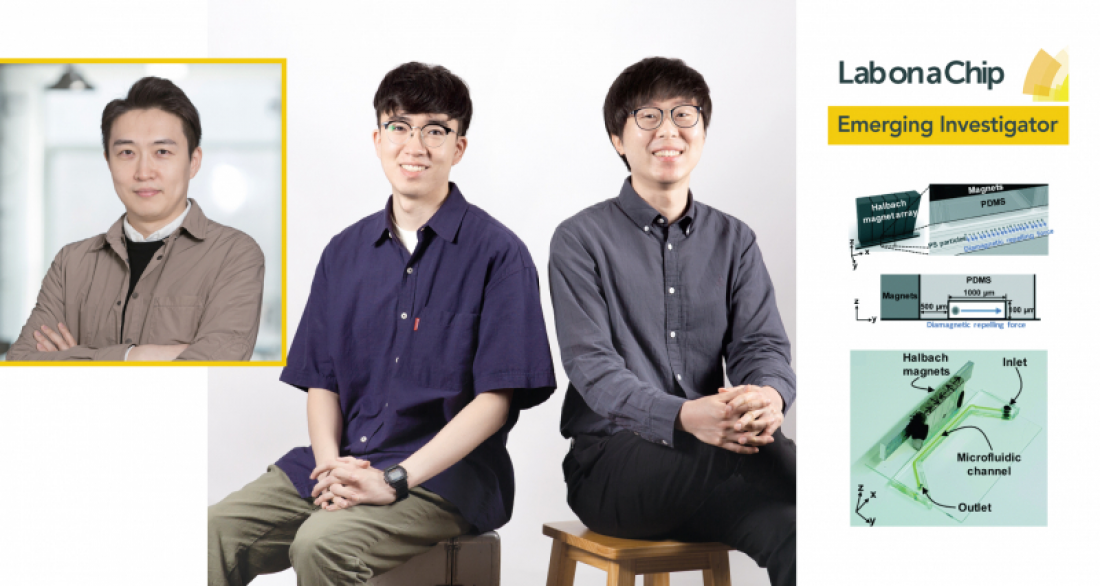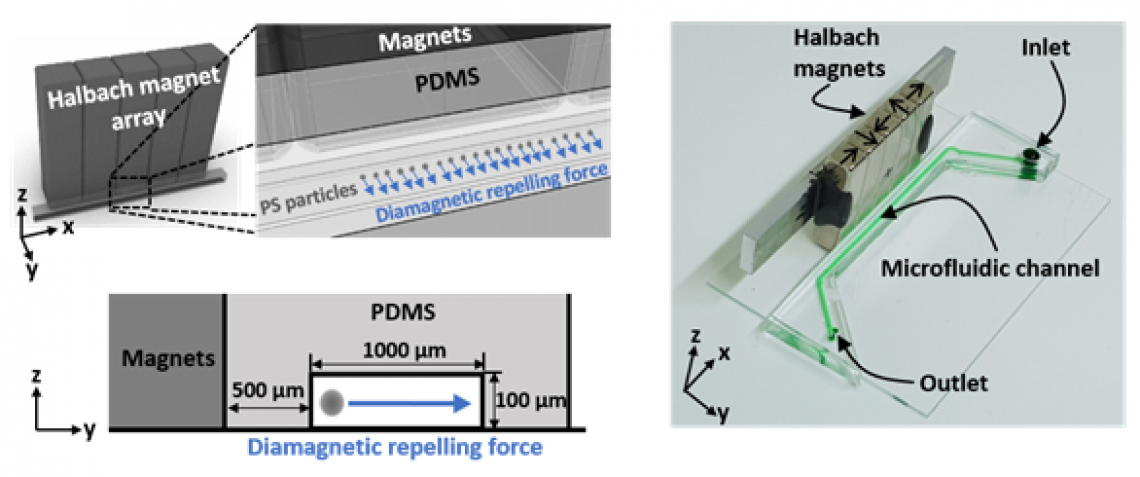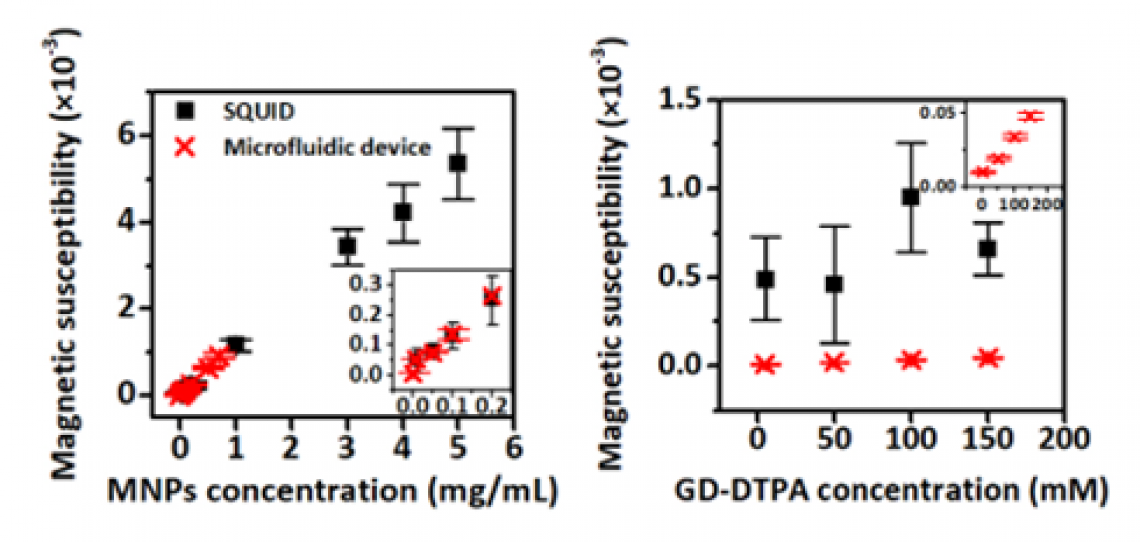From left are Professor Joo Hun Kang and his research team in the School of Life Science at UNIST.
Professor Joo Hun Kang in the School of Life Science at UNIST has been named an Emerging Investigator 2019 by the journal Lab on a Chip, published by the Royal Society of Chemistry.
Established in 2014, the purpose of this international award is to promote and acknowledge research excellence among early career scientists who undertook independent studies within 10 years of research experience since their terminal degree. About 26 young researchers from around the world in the field of miniaturisation have been selected as Emerging Investigators 2019. Thus, this is the first time a researcher from UNIST has been selected.
“Recently, magnetic nanomaterials (MNPs) have been applied to treat various biological solutions, including whole blood, for diagnostic and therapeutic purposes,” says Professor Kang. “This study provides us with the new capability of analyzing weakly paramagnetic solutions such as paramagnetic components or metal contaminants present in environmental liquid samples at low concentrations.” He adds, “Thus, it will help us create new diagnostic technologies based on magnetic nanomaterials.”
Magnetic susceptibility of materials is determined by the components consisted in a mixture, and the overall magnetic susceptibility of materials varies as the proportion of the components changes. As a result, the measured magnetic susceptibility has been often used to reveal the concentrations of impurity or contaminants in materials. However, conventional magnetic susceptibility measuring devices, such as a superconducting quantum interference device (SQUID), is costly and not often available in most research laboratories. Besides, accurate measurement is difficult in case of determining components at low concentrations.
Schematic of the microfluidic device for measuring the magnetic susceptibility of a paramagnetic solution.
To address this issue, the team has developed a microfluidic device that enabled the discrimination of subtle paramagnetic susceptibility of solutions by measuring the diamagnetic repelling velocities of polystyrene (PS) microparticles suspended in paramagnetic solutions when they were exposed to augmented magnetic flux density gradients across a microfluidic channel. Hence, they could also determine the concentration of paramagnetic components in the solution.
Via this approach, the team could accurately measure the magnetic susceptibility of superparamagnetic iron oxide nanoparticles (SPION) and gadolinium-diethylenetriamine penta-acetic acid (GD-DTPA) solutions at different concentrations. Their approach demonstartes the new capability of measuring magnetic susceptibility of solutions that could not be measured at low concentrations via the conventional SQUID magnetometer.
The magnetic susceptibility of the paramagnetic solution MNP solution and Gd-DTPA solution measured by the conventional SQUID magnetometer.
“Here, we have demonstrated a low cost, portable microfluidic device for measuring the magnetic susceptibility,” says Bong Hwan Jang (School of Life Sciences, UNIST), the first author of the study. “This approach can also be applied for measuring the concentration of metal contaminants, including chromium, nickel, and cerium oxide, in drinking water or environmental liquid samples at low cost because these metal contaminants in the samples subtly change the magnetic susceptibility of the solution.”
The findings of this research have been published in the prestigious scientific journal, Lab on a Chip on July 7, 2019. This work was supported by the Bio & Medical Technology Development Program of the National Research Foundation (NRF) funded by the Korean government (MSIT) and Samsung Research Funding Center for Future Research.





